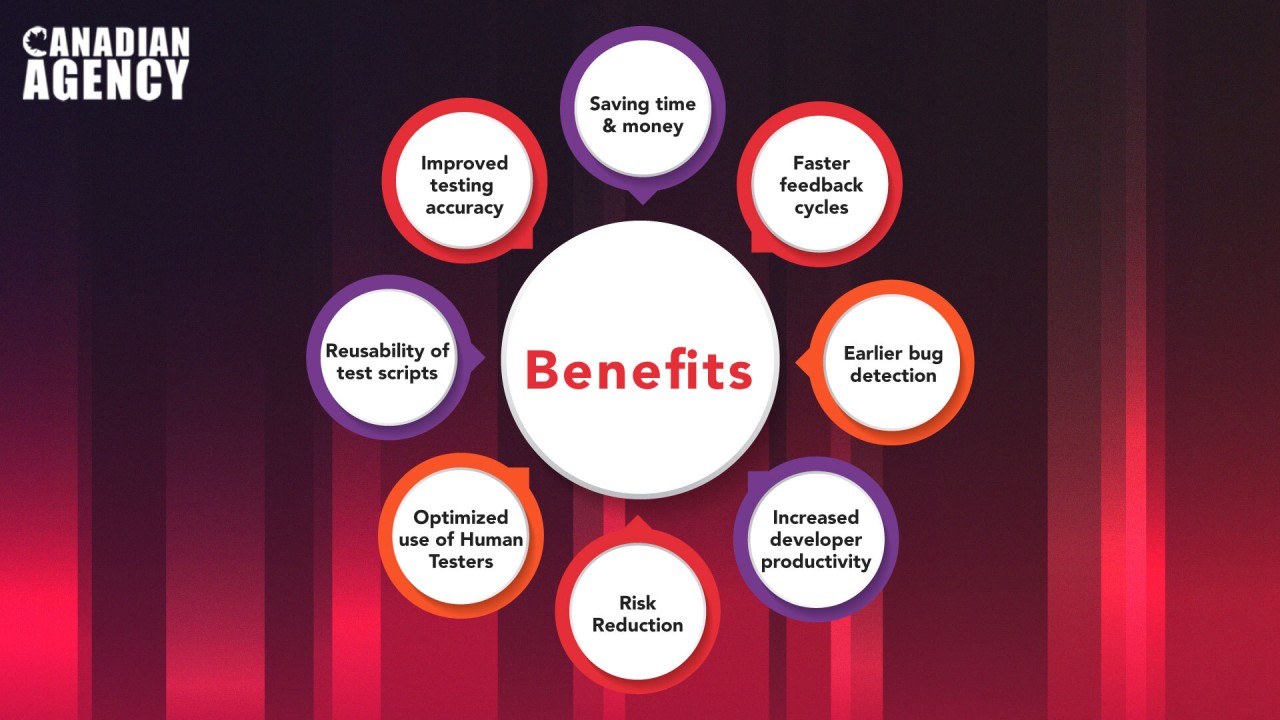What Benefits Does Automation Testing Offer Developers?

Compared to manual testing, automation testing offers a number of significant benefits. It enables the early detection of flaws in the development process, improving quality and eventually saving time and money. Automation frees developers from tedious testing tasks so they may focus on writing new code. Through continuous integration, it also makes it possible to test new code changes instantaneously, providing quick feedback.
By acting as a safety net, automated tests facilitate refactoring and allow engineers to freely enhance code designs.
You will learn about the five main benefits of automated testing in this blog.
1. Early Defect Identification
In a continuous integration pipeline, automated tests can be executed far more frequently than manual tests, for example, after each code change. Defects are discovered far earlier in the development process, when they are cheapest and easiest to rectify, thanks to this earlier and more frequent testing. Early bug detection avoids blocking downstream work or necessitating rework later on.
2. Enhanced Productivity of Developers
Instead of spending time on manual testing, developers may concentrate on building new code thanks to automated tests. Because tests can operate independently, they enable developers and testers to collaborate in tandem. Additionally, developers receive feedback on modifications more quickly without having to wait for the results of manual testing.
Individual productivity rises as a result, and teams are able to complete tasks faster.
1. Facilitates Refactoring
Developers can improve designs and restructure code with confidence thanks to automated tests that do not interfere with existing functionality. A thorough collection of automated tests that serve as a safety net and confirm that the code change did not cause any unexpected problems makes refactoring simpler.
Over time, this results in code that is cleaner and easier to maintain.
2. Makes Remote Work Possible
Development and QA teams can collaborate remotely thanks to automated testing. Without requiring QA resources to be available simultaneously for manual testing, developers can write and refactor code at their own pace when automated tests are in place. Every time code is committed, the tests are automatically executed in distant settings such as continuous integration servers. As a result, team members are not required to operate from the same office during regular business hours. As long as they have access to the internet, they can work from any location. This makes it easier for the team as a whole to work remotely and with flexibility.
3. Testing that is Scalable
When compared to manual testing, automated testing is far more scalable.
The effort needed to develop and maintain automated tests only rises in a rather straightforward linear fashion as a software application’s functionality and code size grow. However, as an application gets bigger, manual testing becomes increasingly more difficult and time-consuming. While human testing may not scale well, automated tests can still test very vast and complicated codebases. Automation makes it simple to grow testing efforts in tandem with growing software projects, user counts, and workloads.
Conclusion
Compared to manual testing, automated testing has many benefits. Opkey is a no-code test automation platform driven by AI that expedites the entire testing process. One of the top ERP testing solutions, it uses state-of-the-art technology like artificial intelligence and machine learning to cut down on testing time and effort. Opkey finds existing tests and makes it possible to create tests with only one click using 30,000 pre-built test cases that do not require any coding. Its easy-to-use drag-and-drop interface enables users to create intricate tests. Opkey offers self-healing broken scripts and real-time change impact analysis. It guarantees that testing will not malfunction when the application changes. Opkey uses automated report generation to enable collaborative reporting and smooth end-to-end testing.
